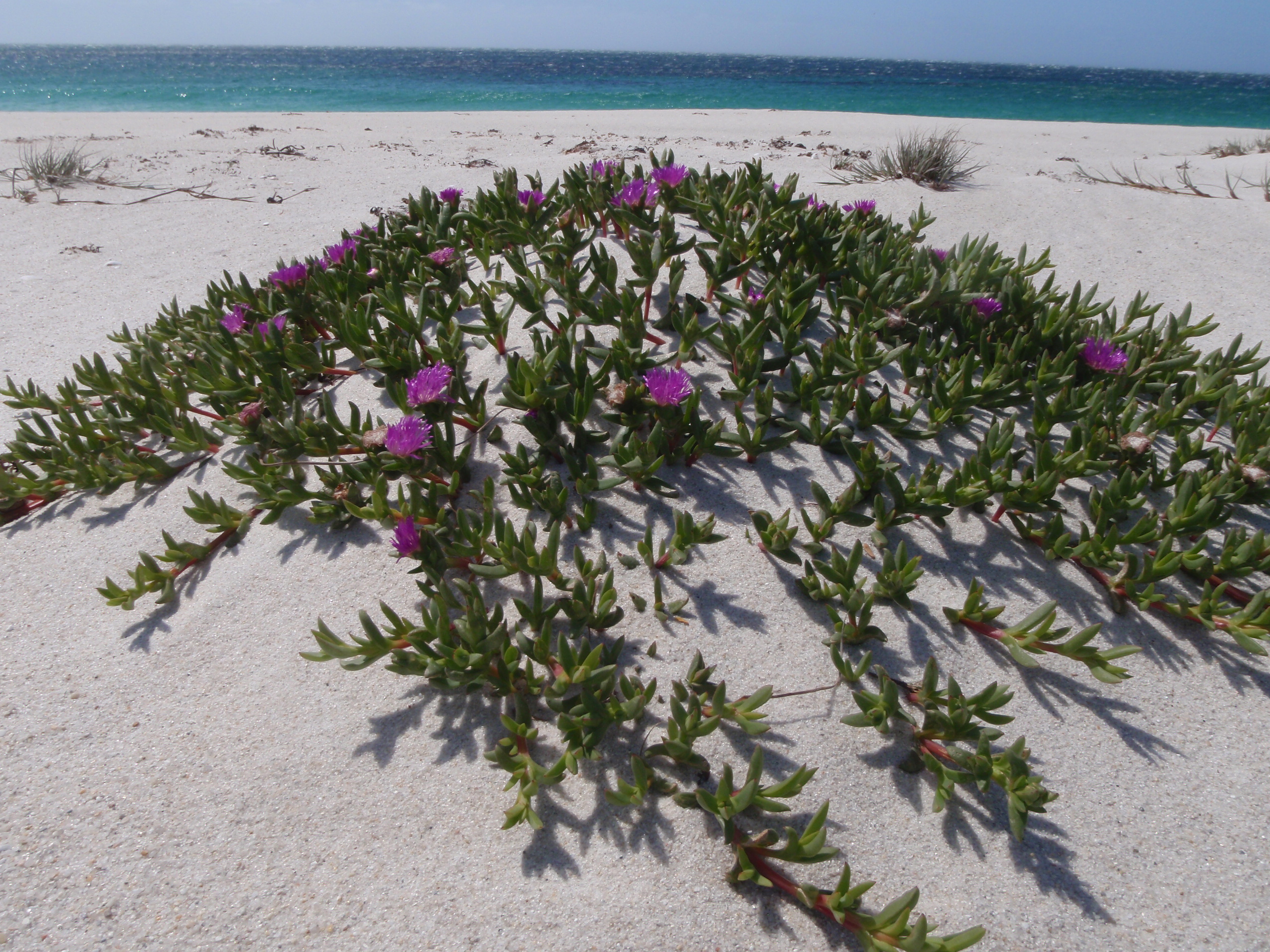Scientific Name: Carpobrotus rossii
Common Name: native pigface
Family Classification (Clade): Eudicots
Family: Aizoaceae
Form Description: Fleshy perennial herb, stems to 1m long, triangular leaves.
Flowers: Light purple 4-6cm diam, solitary at branch ends. Many shiny, narrow petals 2cm long.
Fruit: Fleshy, fig-like, yellowish when ripe. Seeds small, edible.
Municipality
Plant Communities
Habitat Notes
Widespread, common in coastal areas on rocky headlands and sand dunes, coastal cliffs and sand.
Site Tolerance
Dry, Exposed, Moist, Rocky, Windy
Soil Tolerance
Fertile, Loam, Nutrient-poor, Sandy, Well-drained
Frost Tolerance
Hardy
General Notes
Bee attracting. Carpobrotus rossii can be distinguished from Disphyma crassifolium (round-leaved pigface) by D. crassifolium having smaller, less angular leaves, small capsules instead of fleshy fruits, smaller flowers.
Propagation Calendar
-
Flowering Month
Jan Feb Mar Apr May Jun Jul Aug Sep Oct Nov Dec -
Seed Collecting Month
Jan Feb Mar Apr May Jun Jul Aug Sep Oct Nov Dec -
Sowing Month
Jan Feb Mar Apr May Jun Jul Aug Sep Oct Nov Dec -
Cutting Month
Jan Feb Mar Apr May Jun Jul Aug Sep Oct Nov Dec
Propagation Method
Seed Information
Seed Collection
Seed contained in grey capsules which open at maturity. To test for maturity squeeze capsule, tiny reddish-brown seed will release.
Seed Treatment Method
Fermentation Collect fleshy fruits in a plastic bag, mash up and allowed to ferment to replicate digestion by a bird.
Seed Treatment Notes
Remove seed from capsules by soaking in warm water, then ferment by leaving to soak for a few days. Easy to propagate from seed.
Germination Time
3 months
Cutting & Division Information
Very easy to propagate from cuttings.

